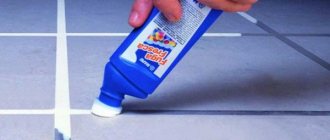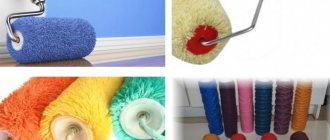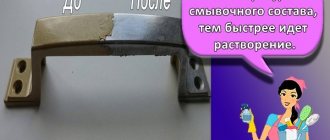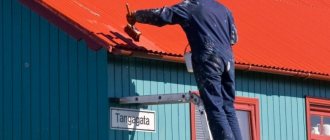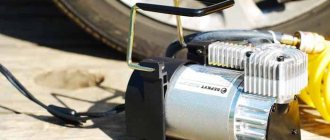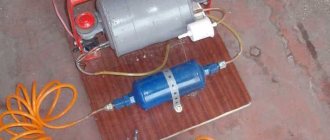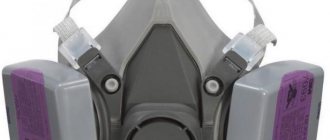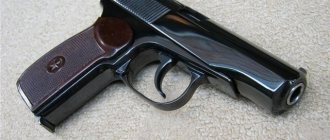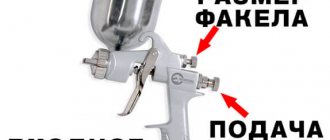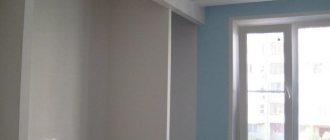System design
The powder painting booth is designed, naturally, to implement one of the stages of the painting process. In this part of the system, particles of sprayed powder must settle on the surface to be painted, and after this, a polymerization process takes place in a special oven, firmly bonding the paint to the surface.
Externally, the camera looks like a welded one-piece box made of industrial metal. It requires:
- Lighting.
- Transport elements.
- Control and control panel.
In this configuration, this device is already considered professional, designed for work throughout the day.
Most commercial powder coating booths are boxes made of steel sheets with a polymer lining. They are fixed to the frame.
The main advantages of a powder coating booth
The main advantages of a powder painting booth over others
A powder painting booth significantly reduces the financial costs of painting products. The material remaining on the surface of the body and suspended in the air is collected using filters and returned to the production process. In this case, the powder undergoes additional purification to avoid contamination.
As a result, losses do not exceed 1 - 2%, while with conventional painting they are 50 - 60%. The use of powder paint makes it possible to widely adjust the thickness of the paint layer in the range from 35 to 250 microns. During accelerated climate tests, the service life of powder paint was determined to be 20 years. Painting in a powder chamber does not require additional drying of the surfaces to be painted.
A significant disadvantage of this type of car painting is the unprofitability of using cameras in a small repair shop. A powder painting booth is essentially a very complex and expensive piece of equipment. In addition, it is impossible to carry out the necessary tinting in the chamber.
Important Requirements
Most compositions of the powder paint itself can be explosive when interacting with oxygen. Therefore, the most important requirement for a powder coating booth is protection against technical explosion.
If we consider production chambers for spraying powder paint, then a recovery installation is installed for the operator (painter). The latter is simply necessary for saving and collecting the powder composition. Otherwise, the particles left by the dyes spread throughout the entire area of the workshop or garage.
It turns out that the recuperator is an add-on to a professional powder painting booth. It has replaceable fabric filters, fans (responsible for exhaust draft), a receiver and a pressurized air supply system.
Sequence of work
The powder coating process includes several stages. The first of these is surface preparation, which involves removing any contaminants from it. In case of repainting, it is necessary to clean the surface of the original paint and primer. These works are carried out after drying is completed using sandblasting, using various abrasives. Coarse ones are designed to quickly remove paint and varnish material, while inorganic materials are used to level the surface.
Next, powder primer is applied to the prepared work surface. This process is carried out in a spray chamber using an electrostatic sprayer. The workpiece must first be grounded. Powder primer, like regular primer, serves as anti-corrosion protection. After the soil has melted in the spraying chamber, powder paint is applied. This work is also carried out with an electrostatic sprayer. To create a smooth, uniform coating, the paint should be applied in several layers (usually 2-3).
After each layer, the product to be painted is placed in a polymerization chamber for 15-30 minutes, where, under the influence of a high temperature of 180-200 ° C, powder paint particles are fixed on the surface of the part due to melting. Upon completion of drying and polymerization, the part to be painted is removed from the chamber and left for some time - this is necessary for it to cool to room temperature.
Upon completion of paint application, the part is coated with powder varnish, which performs protective and decorative functions. It gives the coating additional stability and protects it from fading under the influence of ultraviolet rays. In some cases, varnish is applied to metal that is not covered with paint and primer in order to preserve its texture. In addition, in this case it plays the role of an anti-corrosion agent.
Nuances of work
Work can be divided into two subtypes:
- Application of tribostatic powder.
- Or electrostatic sprayer.
And some nuances for the recuperator: during the painting process, an exhaust hood operates, and polymers in the air must settle on the filters. There they are cleaned of dirt and impurities, and then go to the bunker. This is how they save consumables and protect work areas from excess paint.
Powder coating technology. Polymerization
Other stages:
- surface preparation
- primer
- powder coating
- polymerization
- recovery systems
- ensuring and controlling the quality of powder painting
- advantages of powder painting compared to conventional
After applying powder paint, the product is sent to the coating formation stage. It involves melting a layer of paint, subsequent production of a coating film, its curing and cooling. Melting and polymerization occur in a special oven. There are many types of polymerization chambers; their design may vary depending on the conditions and characteristics of production at a particular enterprise. In appearance, the oven is a drying cabinet with electronic “stuffing”. Using the control unit, you can control the oven temperature, dyeing time and set a timer to automatically turn off the oven when the process is completed. Energy sources for polymerization furnaces can be electricity, natural gas and even fuel oil.
Furnaces are divided into continuous and dead-end, horizontal and vertical, single and multi-pass. For dead-end furnaces, an important point is the rate of temperature rise. This requirement is best met by ovens with air recirculation. Conductive dielectric coating chambers ensure uniform distribution of powder paint on the surface of the part, but if used incorrectly, they can accumulate electrical charges and pose a hazard.
Melting and polymerization occurs at a temperature of 150-220 ° C for 15-30 minutes, after which the powder paint forms a film (polymerizes). The main requirement for polymerization chambers is to maintain a constant set temperature (temperature variation of at least 5°C is allowed in different parts of the furnace) for uniform heating of the product.
When a product coated with a layer of powder paint is heated in an oven, the paint particles melt, become viscous and merge into a continuous film, displacing the air that was in the layer of powder paint. Some air may still remain in the film, forming pores that degrade the quality of the coating. To avoid the appearance of pores, painting should be carried out at a temperature above the melting point of the paint, and the coating should be applied in a thin layer.
With further heating of the product, the paint penetrates deeply into the surface and then cures. At this stage, a coating is formed with the specified characteristics of structure, appearance, strength, protective properties, etc.
When painting large metal parts, their surface temperature rises much more slowly than that of thin-walled products, so the coating does not have time to fully harden, resulting in reduced strength and adhesion. In this case, the part is preheated or the curing time is increased.
It is recommended to cure at lower temperatures and for a longer period of time. This mode reduces the likelihood of defects and improves the mechanical properties of the coating.
The time it takes to obtain the required temperature on the surface of the product is influenced by the mass of the product and the properties of the material from which the part is made.
After curing, the surface is subjected to cooling, which is achieved by extending the conveyor chain. Also for this purpose, special cooling chambers are used, which may be part of a curing oven.
The appropriate mode for forming the coating must be selected taking into account the type of powder paint, the characteristics of the product being painted, the type of oven, etc. It is important to remember that temperature plays a critical role in powder coating, especially when coating heat-resistant plastics or wood products.
After polymerization is completed, the product is cooled in air. After the product has cooled, the coating is ready.
Other stages:
- surface preparation
- primer
- powder coating
- polymerization
- recovery systems
- ensuring and controlling the quality of powder painting
- advantages of powder painting compared to conventional
Subspecies and their features
Nowadays many subtypes of such cameras are produced, and the range is only expanding. The structural components are:
- Dead end.
- Checkpoint.
- Two-post.
- Single post.
- With cartridge filter.
Let's look at the characteristics of some of them.
Single post:
- It has a recuperator equipped with a single filter.
- Can handle up to 99% of airborne paint spray.
- The filter is cleaned as follows: blown manually or using automatic mode.
- Power not less than 3 kW.
- Working space (standard): 1700 x 1100 x 2000 mm.
- Weight – 390 kg.
Two-post (marking KO2):
- Pass-through type.
- It has two recuperators and two replaceable filters.
- The technology for re-cleaning the paint has been developed (up to 99% of the sprayed composition is returned to work).
- Filters can only be cleaned with pressurized air.
- Power from 5 kW.
- Working space 1700 x 1100 x 4000 mm.
- Weight – 640 kg.
This type is most convenient when processing parts from several sides. The products pass through openings for spraying on both sides. This is convenient when two system operators are working at once.
With a cartridge filter, the powder coating booth is equipped with:
- Paint booth.
- Replaceable filter system.
- Filter cartridges.
- Sieve with vibrating mechanism.
- A container for selecting paint with filters.
- Powder injector.
- With a scraper.
- Compressed air filter blowing system.
- An absolute filter.
- System for supplying clean air.
- Lattice.
There are also special working moments specifically for this type. They are as follows: due to draft, air with powder paint is supplied. All this goes through the cartridges. The paint is sifted and poured into the receiver. Then this composition is fed into a powder coating gun. All excess that remains on the filter is removed with compressed air. And if there is a lack of paint in the system, the sensor lights up.
Most often they buy and use walk-through models of powder chambers, because they are part of a painting line integrated into a common transport system.
Purpose and design of the powder paint application chamber
The spray booth for powder coating is designed for applying powder paints to a product that is located in the working area of the chamber using a special electrostatic spray gun. The powder painting booth is intended only for working with powder paints in accordance with GOST 9410-88; working with liquid paints is not allowed.
The inner surface of the spraying chamber is covered with special powder paint, the joints of the inner walls of the chamber are sealed and have large radii of rounding, which allows you to quickly clean the chamber from settled powder when changing color. Depending on the design, the painting chamber has one or two working openings (for personnel). The spraying chamber can be a dead end or a through chamber.
We offer to buy a powder painting booth at the manufacturer's price. The spray chamber kit consists of:
- working chamber;
- filter block;
- control panel.
The working chamber is a one-piece welded structure with an opening in the front part, through which the operator carries out the process of applying powder paints to products.
Brackets with a lamp are installed on the roof of the working chamber. To the right of the working opening of the chamber there is a control panel and a compressed air cleaning device.
A filter unit is built into the upper rear part of the working chamber , which is a sealed box-like structure with a removable top cover.
At the top of the filter block there is a hole for connecting exhaust ventilation.
Five replaceable filter elements are installed at the bottom of the filter block. Regeneration (cleaning) of replaceable filter elements is carried out automatically - by pulse blowing for 0.1-0.2 seconds. once every 15 minutes. using shut-off valves installed inside the filter block. The supply of compressed air with a pressure of 5-6 kgf/cm is carried out through a special fitting connected to the side wall of the filter unit through a compressed air purification device.
Regeneration (cleaning) can be carried out manually - at any time convenient for the operator by first pressing the START button, then the STOP button.
The filter unit provides a degree of air purification of 99.8%.
The degree of loss of powder paints is no more than 5-6%, since the powder paint can be reused.
Spray chamber control panel
The spray chamber control panel is designed to provide power to the spray gun, control pulse blowing of replaceable filter elements, lighting load, as well as to protect lines during overloads and short circuits.
Recommendations for selection
When choosing the right paint, it is important to pay attention to the speed of color change. Cleaning, or rather the process itself, is also important. Therefore, the number of filters is directly related to shades.
The cameras are equipped with various equipment for operation. For example, a manual or automatic spray system. The machines are fixed both motionless and on a manipulator. For the latter, it is possible to choose several degrees of freedom.
It turns out that it is better to choose according to the following characteristics:
- Shape and size of processed parts (products for powder coating).
- Performance calculations.
- Color change rates and their total number.
- Energy carrier.
This is the only way to achieve benefits by controlling costs and quality of coatings. Yes, and one more thing: the price of a finished powder paint chamber directly depends on the configuration and workload during production.
There are companies that assemble such spray booths according to individual requirements or preferences.
Any design has specific areas for the painting process, as well as differences in size and price. If we consider the dimensions, then it is not the dimensions that are important, but the working volumes of the chambers. Therefore, for specific needs, you can select the required volume in advance. That is, when choosing, they must focus on working and production issues, on the parts that will be processed.
Fully automatic line
Features of choosing a recovery system
Her choice is influenced by the following factors:
- air speed at the system inlet;
- filter material;
- capture efficiency;
- cost of operation;
- equipped with a pneumatic pump.
One of the main indicators is air performance. It should be the same as that of the spray chamber. Depending on how often the paint is expected to be changed during the technological process, the type of recuperator is selected. The degree of air purification by the recuperator must be quite high.
The main function of the recovery system is to capture and collect polymer powder that has not settled on the product being painted. In addition, special attention should be paid to the efficiency of ventilation of the working space of the spraying chamber, which helps to avoid the creation of an explosive concentration of powder (more than 20 g/m3). In accordance with European safety standards, the maximum permissible concentration cannot exceed 50% of the explosive concentration (10 g/m3). For example, with a powder emission value of 300 g/min, the productivity of the recovery system should be at least 3000 m3/h per nozzle.
The powder paint application chamber has special openings. With the help of a ventilation system, air flow circulates through them. It prevents fine powder from being sprayed outside the chamber. The air flow speed must be at least 0.5 m/s. This will help avoid air pollution in the production area and the risk of fire.
Recovery systems do not directly affect the painting process itself, but they are one of its most important components. When chosen correctly, they ensure compliance with safety standards and reduce the cost of painting work by reusing powder paint that has not settled on the part being painted.

